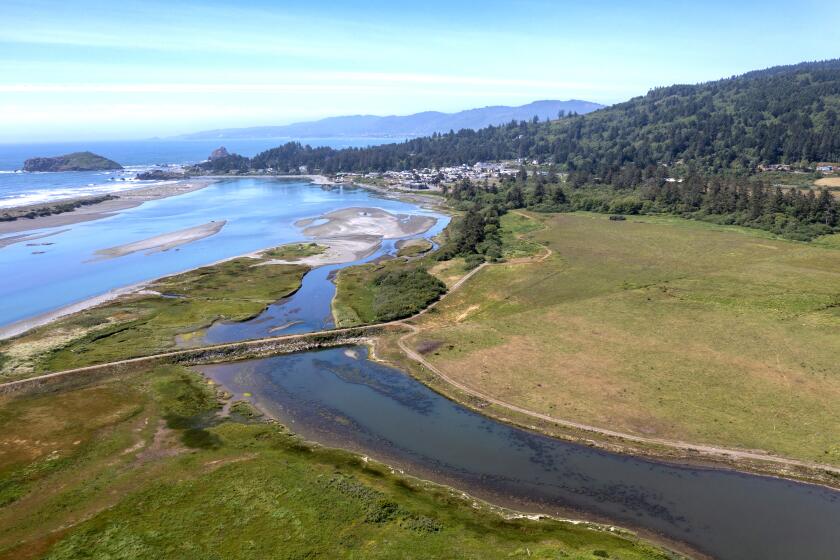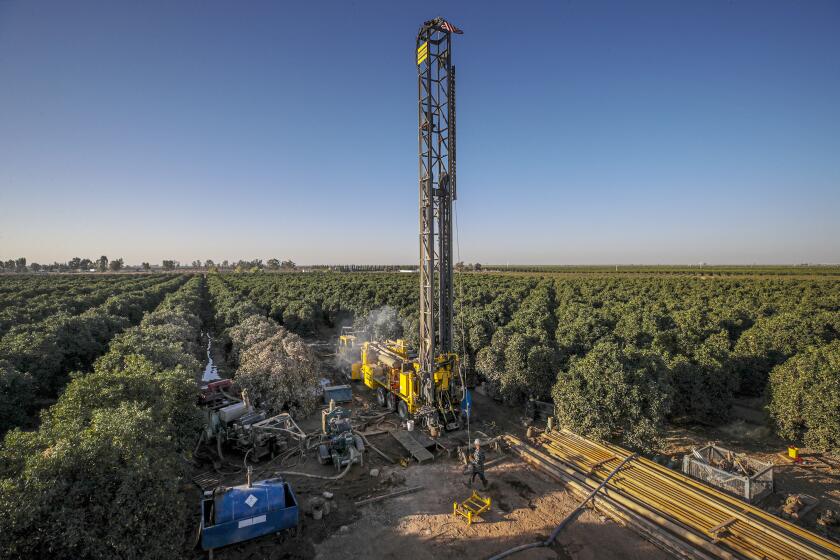Conservationists create a vast home on the eco-range for wildlife north of L.A.
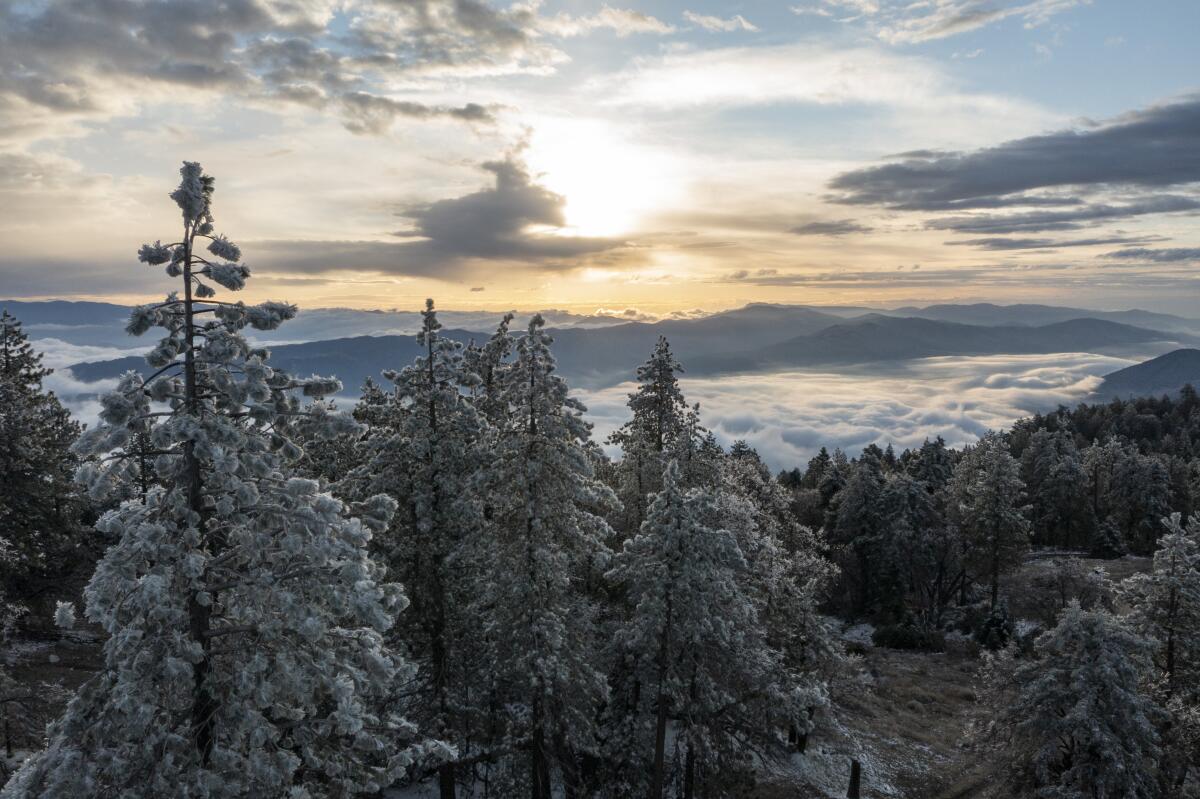
- Share via
TEHACHAPI, Calif. — When Zachary Principe wants to introduce people to one of his favorite vistas, he takes them to the top of Bear Mountain, a sky island in the Tehachapi Mountains north of Los Angeles where California condors roost in the boughs of sugar pines.
The mountaintop 6,805 feet above sea level is a refuge for mountain lions, mule deer and bobcats and is only about a two-hour drive from 18 million people in Southern California. “But it’s off-limits to development,” said Principe, project manager for the nonprofit Nature Conservancy, “because we bought the place.”
Bear Mountain is among the latest additions to the conservancy’s new Frank and Joan Randall Tehachapi Preserve, which consists of nine working livestock ranches acquired, in bits and pieces, over the past decade as a last line of defense against sprawl, the mounting pressures of climate change and wind farms spreading across the region’s ridgelines.
On a recent tour of the summit, Principe and Cara Lacey, the latter of whom is the conservancy’s director of wildlife corridors, gazed out from a promontory offering a window into a bygone era of Southern California, a nexus of overlapping ecosystems and working ranches where cattle graze on verdant pastures.
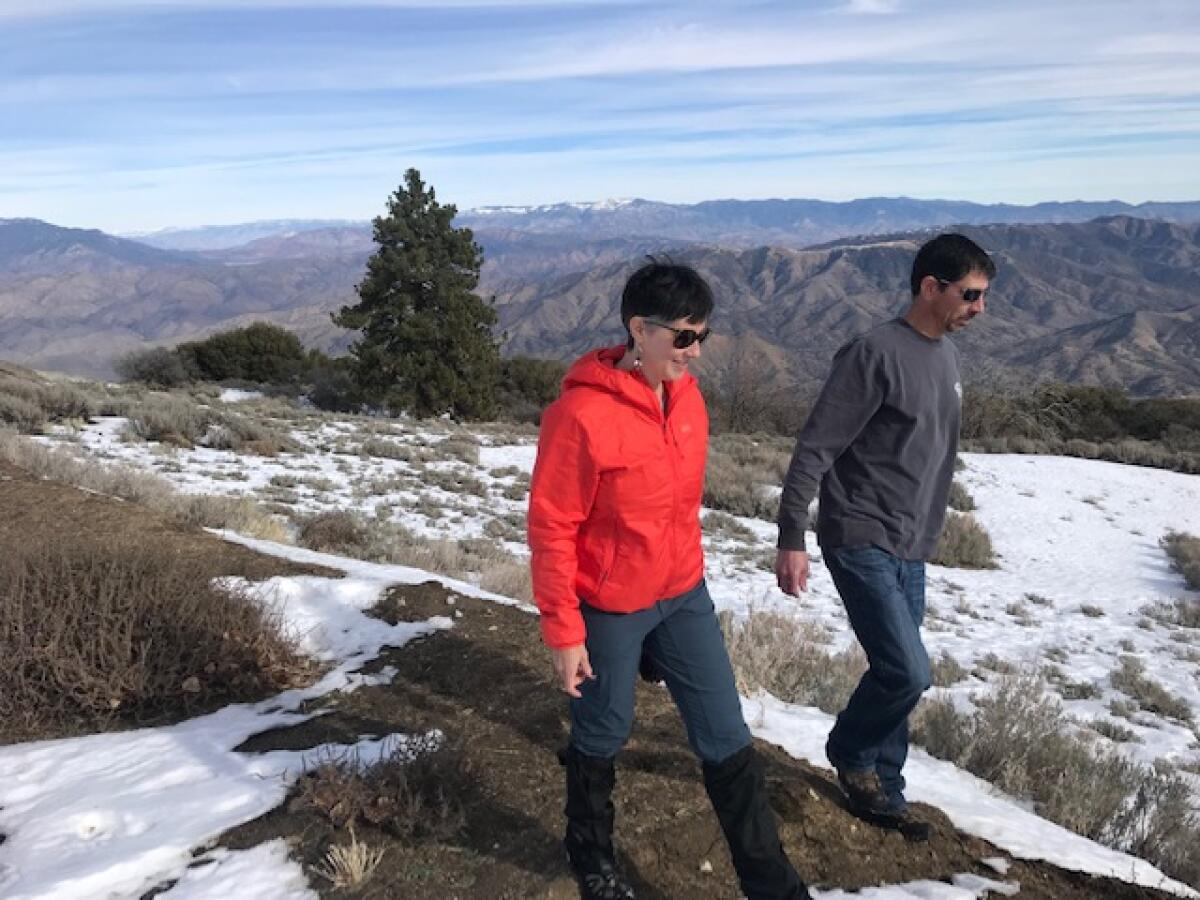
“The preserve is a Grand Central Station of wildlife corridors sustaining gene flows of native wildlife,” Lacey said, “by connecting them to swaths of undeveloped habitat that run from the Sierra Nevada to the Baja Peninsula.”
When a coveted ranch on the most pristine river in California was suddenly up for sale, a shocking history — and a massacre — bubbled to the surface.
They include the Mojave Desert to the east, the southern Sierra Nevada’s snow-capped granite peaks to the north, San Joaquin Valley grasslands and coastal ranges to the west and the vast oak savannahs of Tejon Ranch to the south.
The ranchlands were secured with roughly $65 million in grants and financial agreements arranged by the Nature Conservancy in collaboration with the Sierra Nevada Conservancy, the Wildlife Conservation Board, the National Fish and Wildlife Foundation, and the Department of the Navy.
They include a $50-million donation from Frank and Joan Randall, a pair of Western iconoclasts who wanted to help transform the ranchlands into a home on the eco-range for wildlife as well as a healthy place to raise cattle.
“In my lifetime, I have witnessed massive changes in the state of nature and have seen open spaces disappear across Southern California,” said Frank Randall. “Time is not on our side. We need to act now.”
“That’s why Joan and I are so excited to see this Preserve come to fruition,” he added, “and to know we made every effort to ensure this special place will be here and in good hands now and into the future.”
Despite a California law intended to end over-pumping of aquifers, a frenzy of agricultural well drilling continues in the San Joaquin Valley.
Some conservationists view the preserve as a critical component of a future network of protected lands extending from Canada to Mexico that would be “rewilded” with reintroduced species to mimic the biodiversity of pre-Columbian America.
Its current protected neighbors include the 93,000-acre Wind Wolves Preserve, the 246,812-acre Carrizo Plain National Monument and Tejon Ranch’s 240,000 acres of conservation easements.
“We’ve done an amazing job of protecting a lot of the land between Los Angeles County and the Sierra Nevada range,” said Michael Sweeney, the conservancy’s executive director of the California region. “As beautiful as these lands are, however, they are shadows of their former selves.”
That’s because they are missing a lot of once common native species important to their ecological health — pronghorn, bighorn sheep, Tule elk, grizzly bears, wolves and jaguars, Sweeney said. “We’ve always had grand ambitions of rewilding these lands.”
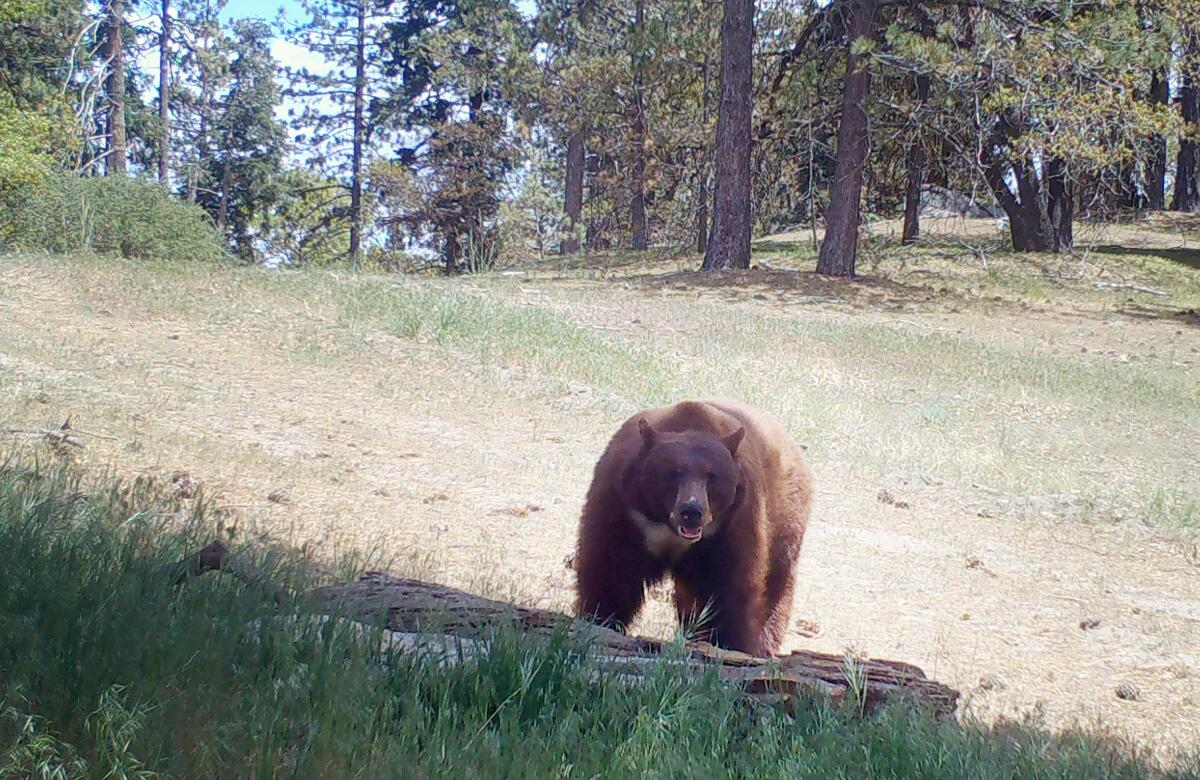
For the time being, however, “we intend to maintain ranch operations as a nature-building management tool because, among other things, livestock keep the invasive weeds down,” Sweeney said.
Scientists say encroaching development threatens to fragment pasturelands and cut off wildlife corridors with roads and suburbs, diverted stream flows, and weekend crowds.
Even loose dogs and cats would take a toll on the area’s federally endangered plants and animals, including Bakersfield cactus, arroyo toads and the rarely seen brick-red Tehachapi slender salamander, which lives most of its life underground, and, having no lungs, absorbs oxygen through its skin.
A scientific investigation by Robert Stebbins, the now deceased preeminent expert on western North American reptiles and amphibians, into the yellow-blotched ensatina salamander, became a classic of biological research.
The nocturnal salamander is one of seven species of ensatina, each of which is found in a limited range in the mountains and foothills encircling California’s Central Valley, including the Tehachapi Mountains.
Stebbins’ work aimed to resolve a biological puzzle: Why are two species of a creature in California virtually identical, except in color?
The differences are striking among salamanders found in the mountains around the Central Valley. On the western ranges they are mostly reddish brown, with orange bellies. On the eastern range, however, they are dark with bright yellow splotches — and the colors become brighter at the southern end of the range.
He came to believe that the salamanders evolved independently and adapted to their environments — as though on separate islands — from common ancestors in the north. The theory is highlighted by renowned biologist Richard Dawkins in his 2004 book, “The Ancestor’s Tale: A Pilgrimage to the Dawn of Evolution.”
“There is so much more just waiting to be discovered in this preserve,” Sweeney said. “Future projects include a full-scale biological survey.”
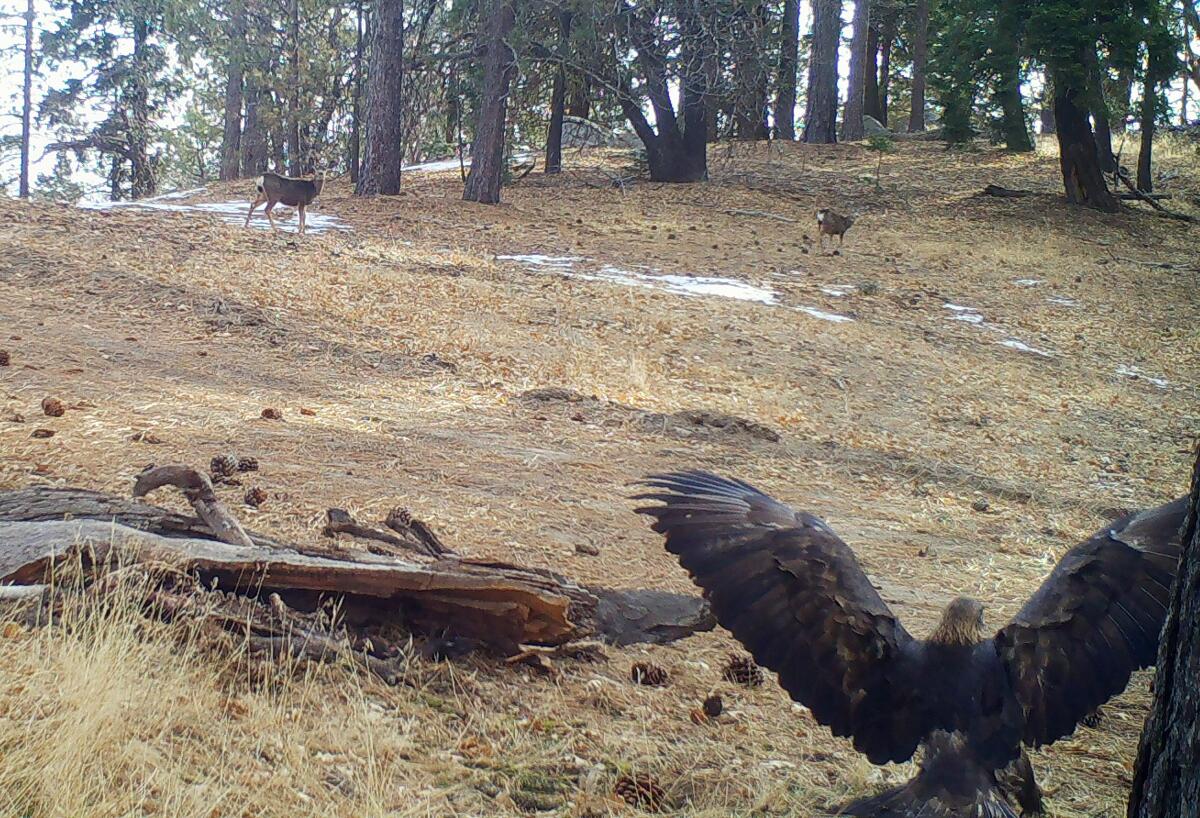
To balance the needs of cattle and wildlife above and below ground, selected slopes are grazed to keep grasses and shrubs low enough for hawks and golden eagles to spot gophers and other prey more easily. In other areas, grazing is controlled to prevent erosion and allow native plants and flowers to flourish. Fences are going up along waterways.
Moderate levels of cattle grazing around ephemeral ponds that form seasonally, under certain conditions, lead to a greater number and greater variety of native plants, according to a recent study led by researchers at UC Davis and UC Agricultural and Natural Resources.
“Livestock grazing can be used as a conservation tool, provided you have a plan,” said Ken Tate, co-author of the study. “It’s on the shoulders of the land managers to set goals and objectives and then meet them.”
From its southern boundary at the Tejon Ranch, the Randall Preserve steps up to the snowy heights of Bear Mountain, an isolated mountain offering creature comforts including a perennial spring flowing through stands of sugar, Ponderosa and Jeffrey pines, black oaks, and elderberry bushes that are seldom visited by hikers and mountain bikers.
Down the mountain, the conservancy is collaborating with the California Department of Transportation and the California Department of Fish and Wildlife to transform a bridge built for agricultural purposes that spans a busy stretch of Highway 58 through Tehachapi Pass into a modified wildlife crossing for black bears, cougars, bobcats and mule deer.
“We’ve only just begun to understand the ever-changing complexity of the ecological rhythms of life in this vast preserve,” Principe said.
“The good news,” he added, “is that we can now watch them change in their own time, and not because of the pressures of development.”
More to Read
Your guide to our clean energy future
Get our Boiling Point newsletter for the latest on the power sector, water wars and more — and what they mean for California.
You may occasionally receive promotional content from the Los Angeles Times.
